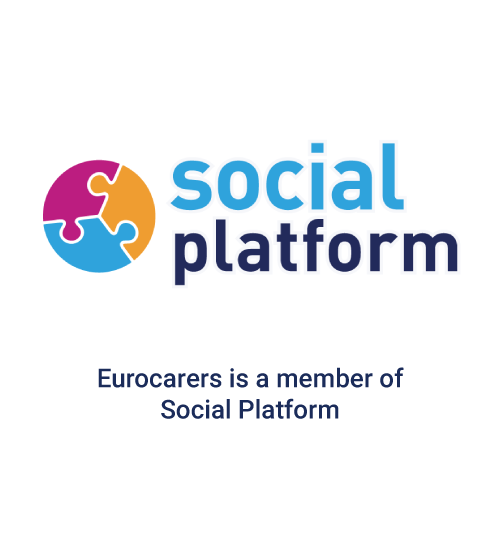SLOVAKIA

Cross-country comparisons show that Slovakia is facing a delayed ageing process. While the country displays one of the youngest populations in Europe at present, demographic projections suggest that the population is going to age at one of the highest paces in the EU.
In the period 2019-2060 the share of people aged 80+ in the Slovak population is expected to quadruple, from 3.3% to 12.9% (EU-28: 5.7%-11.8%).
Over the same period, the old age dependency ratio measured as the proportion of 65+ as a percentage of the 20–64-year-olds will rise from 23.5% (EU-28: 31%) to all of 71.7% (EU-28: 55.3%). Life expectancy for men and women at age 65 is projected to rise from 15.4/19.3 years (EU-27: 18.1/21.6) in 2018 to 20.8/24.3 years (EU-27: 22.4/25.6) in 2060. In 2018, healthy life expectancy for men and women was 54.8 and 56.6 years, respectively, compared to 63.4 and 63.8 years for the EU-28.
Slovakia belongs to the EU-27 countries with a significant gender imbalance for very old people. It is most apparent among people aged 85 years old or more. In 2018, there were more than 2.5 women aged 85 and over for every man in the same age group, representing the 7th highest ratio among the EU-27 countries. A large gap was also recorded for people aged 75-84 years: there were approximately 1.8 women per man in this age range, which was the 5th highest ratio in the EU-27 (Eurostat, 2019: 17).
Under an assumption of no policy change, the Ageing Report scenario suggests that public expenditure as share of GDP would rise from 0.9% to 1.6% (EU-27: 1.6%-3.1%) by 2070. The impact of a progressive shift from the informal to the formal sector of care in Slovakia would entail an estimated increase by 149% in the share of GDP devoted to public expenditure on long-term care (128% on average for the EU27).
Responsibility for long-term care in Slovakia is formally divided between the Ministry of Health and the Ministry of Labour, Social Affairs and Family (MLSAF). Under the auspices of the Ministry of Health, various interventions are provided based on public health insurance, including the use of geriatric clinics, medical and nursing facilities for the long-term ill, nursing care homes, and nursing home care agencies. The MLSAF is responsible for social services (benefits in kind) and cash benefits.
Long-term care takes three forms: residential care, home care services and informal care. The most frequent form of long-term care is residential care, which is provided by various facilities aimed at different groups. A majority of clients are elderly persons of pensionable age. However, these data should be interpreted with caution, because the term ‘long-term care’ used in the MLSAF report on the social situation of the population is based on the number of all long-term care clients, including persons with disabilities, in need of long-term care; as well as persons who stay in social services homes for long periods, but without the need for intensive care. Home care services are provided by professional workers who work for public or private providers, even though publicly-run services are the most common. Although the formal care sector is relatively more important, informal carers represent a key element of the LTC services in Slovakia because it compensates for low capacities of formal LTC services.
A social and health assessment of the applicant’s personal situation is the basis for any long-term care intervention. It determines both the degree of dependence and extent of need for assistance. Provision of cash benefits relies on means testing. Social services are provided mainly by self-governing local and regional authorities and financed from local taxes, which are supplemented by clients’ payments. Cash benefits are paid either to the informal carer or the care recipient. They are funded from general taxation.
Fees for long-term care services (and social services in general) are set by public providers (municipalities, self-governing regions) and private providers, taking into account eligible costs and revenues from financial subsidies provided in the previous year. The Act on Social Services (§ 73) defines a minimum amount of income that must remain at a service recipient’s disposal after deducting fees for services. For example, after paying charges for home care services, a recipient’s income must be equal to at least 1.65 times the subsistence minimum (for an adult person). After paying fees for residential service provided for a whole year, a recipient’s income must in no case be less than 25% of the subsistence minimum.
The long-term care sector in Slovakia suffers from low wages. Besides, there is quite a large number of care workers (women) who work abroad, especially in Austria and Germany, in order to earn an adequate income. Financial sustainability of care is also a challenge and higher public subsidies are planned for the future, based on a positive prognosis for economic development. Since 2018 the state provides financial contributions to providers of social service facilities in order to counter low wages in the sector. There is also an increasing interconnection between health and social long-term care, in the form of an increased use of health insurance resources (i.e. a gradual expansion in the number of diagnoses covered by health insurance to long-term care clients). Higher contributions from clients are seen as another way to improve the system’s financial stability.
Number of carers
According to Radvanský and Lichner (2013: 5), only 14% of long-term care is provided on a formal basis, either institutionally or at home. Thus, informal care represents a dominant part of the long-term care sector in Slovakia. Informal care is provided by family members, who can claim care allowance. The average monthly number of people receiving care allowance in 2019 was 57,048. People of working age accounted for 59 % of all recipients (Ministry of Labour, Social Affairs, and Family, 2019). It is estimated that the actual number of informal carers is higher than the number of benefit recipients (Ministry of Finance, 2019), because care allowance is paid only to carers who care for people diagnosed with severe disabilities, who represent approximately 20 % of the people who are in need of LTC. As a result, there are caregivers who provide long-term care without financial support from the state.
Recognition and definition of carers
Before 2001, informal carers in Slovakia were not systematically mentioned in social welfare legislation – they did not qualify for social insurance, and respite services as well as economic support for informal carers were lacking. Between 2001 and 2010, several legal amendments were introduced to close this gap. By doing so, both national and local government levels are contributing within their area of competence. Having said that, informal care and carers are still not properly defined in the legislation.
The situation of informal carers has been addressed in 2020 by a programme statement of the government, which has declared that it will establish a system of skills validation for informal carers and it will consider introducing supervision for informal carers, as well as a new ‘benefit for recreation’.
Access to information and advice
Informal education of informal carers is provided through consultations with health care workers. Social counselling is also possible and is arranged by the local state administration and the regional and local governments (Bednárik – Brichtová – Repková, 2011: 15).
Access to respite care
Informal carers can take leave and recover from caring duties by using so-called “respite care” services. The aim of the respite care services is to help informal carers by providing a period of mental and physical health recovery and maintenance. It is provided for a maximum of 30 days per year and is organised by municipalities, which have to provide substitute social services for disabled persons during this period. During the period of respite care, municipalities have to provide substitute social services for people with disabilities. During this “break” carers continue receiving the nursing allowance. The usage of respite care services is nevertheless low in Slovakia.
Social inclusion of carers, access to education and employment
Informal carers can claim for care allowance. As it is paid only to the carers who provide care for a person with severe disability, it does not cover those who care for other people depending on assistance. This is the case in particular for people who provide long-term care for their relatives without an official assessment of their degree of dependency. According to the spending review in the healthcare system (Ministry of Finance, 2019), there is a significant proportion of people who care for relatives without attendance service benefit.
Carer’s Allowance
Two allowances are discussed hereunder: the nursing allowance and the personal assistance allowance. The first one is paid directly to informal carers who care for dependent relatives, and the second one is paid to dependent persons in order to support their independence from their relatives and autonomy. Personal assistance is provided mainly by personal assistants who are not relatives.
Informal carers can claim a nursing allowance (príspevok na opatrovanie), which is paid directly to them in the form of a social transfer (paid by the offices for labour, social affairs and family). The condition for obtention is to provide intensive care to a person with a disability aged 6 years and above who − according to an official assessment – is reliant on nursing. While the nursing allowance is intended for the relative of a dependent person, it can be paid to someone else provided they live with the dependent person (i.e. same place of residency). The health and social insurance contributions for the nursing allowance are paid by the state.
The nursing allowance is means-tested on the basis of the care recipient’s income. Its amount depends on several factors. If the long-term care is provided only to one person, the allowance amounts to 125% of the subsistence minimum for an adult person (€249.35 per month). If two or more dependants receive informal long-term care, the allowance equals 162% of the subsistence minimum (€323.36). The allowance is increased by €49.80 per month where a person cares for one or more severely disabled children. The nursing allowance can also be claimed if a dependent person uses day care services or attends a school facility. In these cases, it amounts to 112% of the subsistence minimum (153% for persons caring for two or more dependants). The amounts of nursing allowance also depend on whether the caregiver receives a statutory pension benefit or not.
Informal care may be combined with paid work, on condition that earnings from work do not exceed twice the subsistence minimum for an adult person. The allowance is also paid to carers who increase their qualifications by an external form of study, on condition that they ensure care for the dependant by another person.
The nursing allowance for informal carers cannot be paid if the dependent person receives the personal assistance allowance. Further, it cannot be combined with the provision of (formal) home care exceeding 8 hours per month, or with weekly or yearly residential services.
In 2016, the majority of nursing allowance recipients were women aged 25–59 who received, on average, €170 per month. Persons receiving pension benefits (essentially women aged 65 years and older) constituted the second largest group of informal carers, receiving on average €89 per month.
The state supports persons who care for disabled dependants and receive the nursing allowance by paying contributions to old-age and invalidity insurance schemes.
Severely disabled persons aged between 6 and 65 years who are dependent on personal assistance are entitled to a personal assistance allowance (príspevok na osobnú asistenciu). Persons older than 65 years are entitled to the allowance only if they receive it before the age of 65. Dependence on personal assistance is defined according to a list of daily activities which require the assistance of other persons. Unlike the nursing allowance, the personal assistance allowance is subject to taxation.
One of the greatest challenges with regard to long-term care provided at home concerns the adequacy of income support to informal carers. It is indeed limited in two ways: via limitations imposed in reference to the care recipient’s income (means-testing) and through limits imposed on the potential work earnings of the informal carer.
Carer’s leave
In order to take leave informal carers can use so-called respite care services. There is no other special leave for persons caring for disabled children/adults or for the elderly.
Persons who work are entitled to leave to care for sick family member (for a maximum of 10 calendar days per year). The leave is provided if a relative is sick and requires acute care, including sick children, husband/wives, parents or spouse’s parents. The leave is also provided to parents who care for a child under the age of 10 because of a quarantine or because the school or education facility is closed due to quarantine. During the leave, a benefit is paid at the level of 55 % of the assessment base (which takes into account gross earnings in previous years, with a ceiling 1.5 times the monthly average wage). The benefit is not granted to persons who receive:
- income replacement during temporary work incapacity,
- sickness benefit,
- maternity benefit or
- parental allowance.
A need for long-term care is partially taken into account in the parental leave scheme. In general, parental leave allowance is provided up to the child’s age of 3, but can be extended to up the age of 6 if the child has a long-term negative health status.
In 2019, a new social benefit – benefit for long-term care for a sick relative (dlhodobé ošetrovné) – was introduced. Benefit for long-term care for a sick relative complements the benefit for caring for a sick family member that is currently in place. It allows people to care for relatives who leave hospital in a poor health or are in need of palliative care for a maximum of 90 days. It is intended for people paying sickness insurance contributions. The amount of the benefit was set as 55 % of the average wage. This legislation came into force as of January 2021.
- The 2021 Long-Term Care Report, Trends, challenges and opportunities in an ageing society, EC 2021
- The 2018 Ageing Report, Economic and Budgetary Projections for the EU Member States (2016-2070), EC, 2018
- ESPN Thematic Report on Challenges in Long-Term Care, Slovakia, EC, 2018
- ESPN Thematic Report on work–life balance measures for persons of working age with dependent relatives, Slovakia, 2016
- Joint Report on Health Care and Long-Term Care Systems and Fiscal Sustainability, EC, 2016
- Adequate social protection for long-term care needs in an ageing society, European Commission, 2014
Last Updated on March 21, 2023































